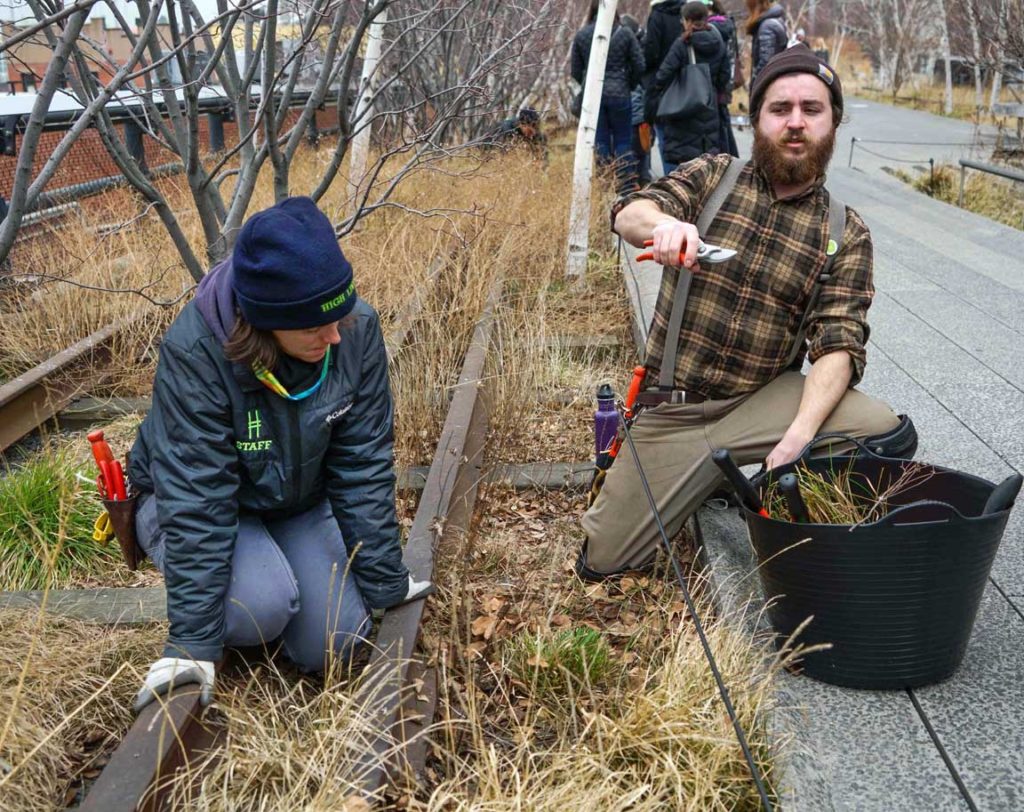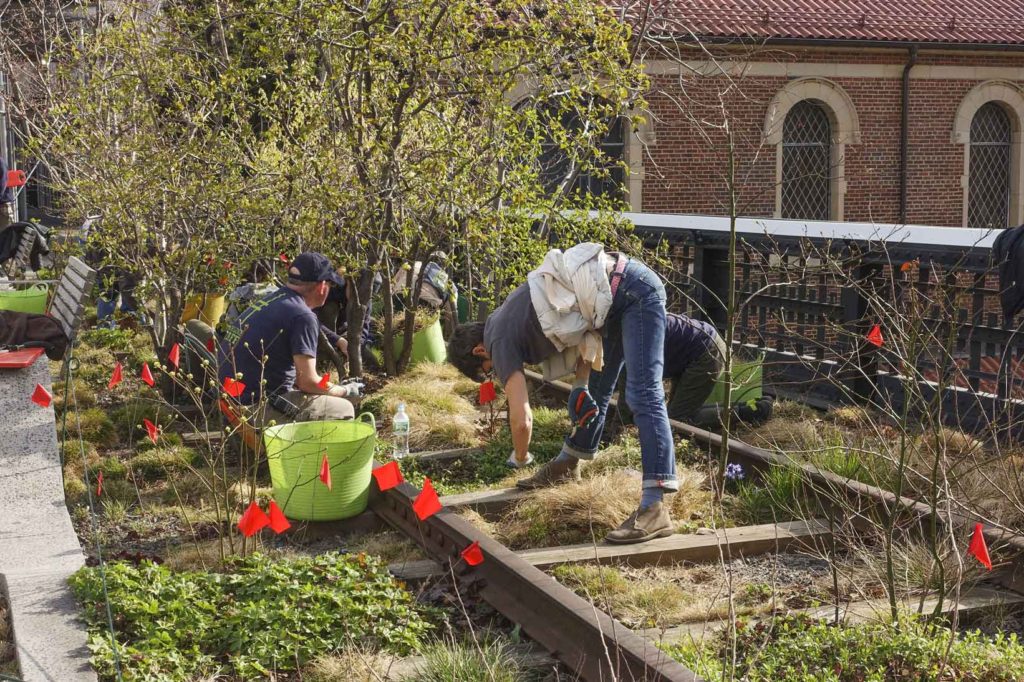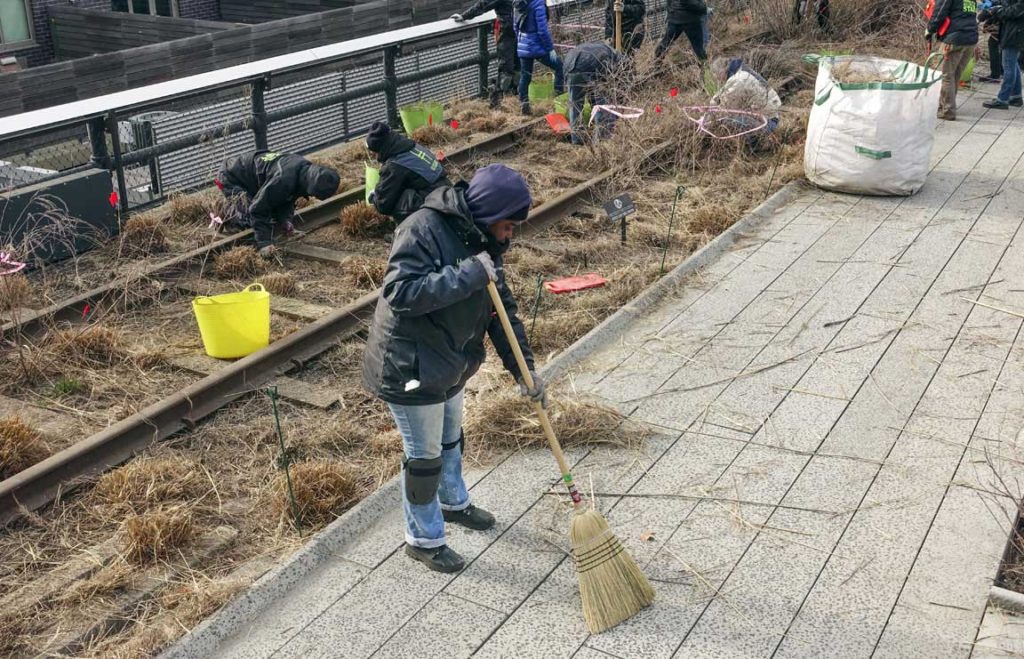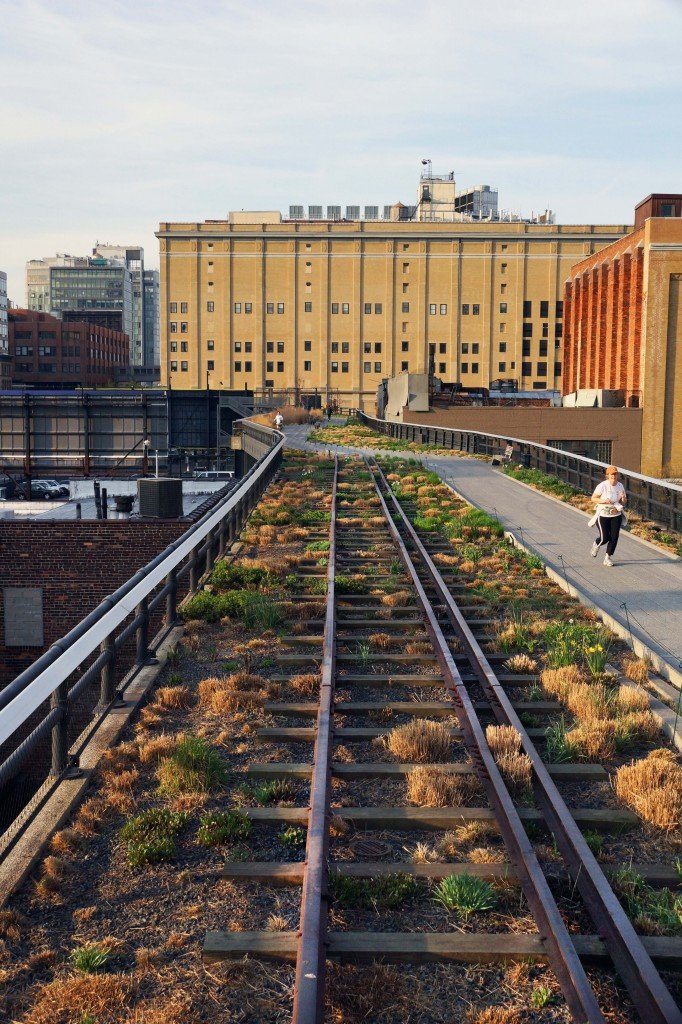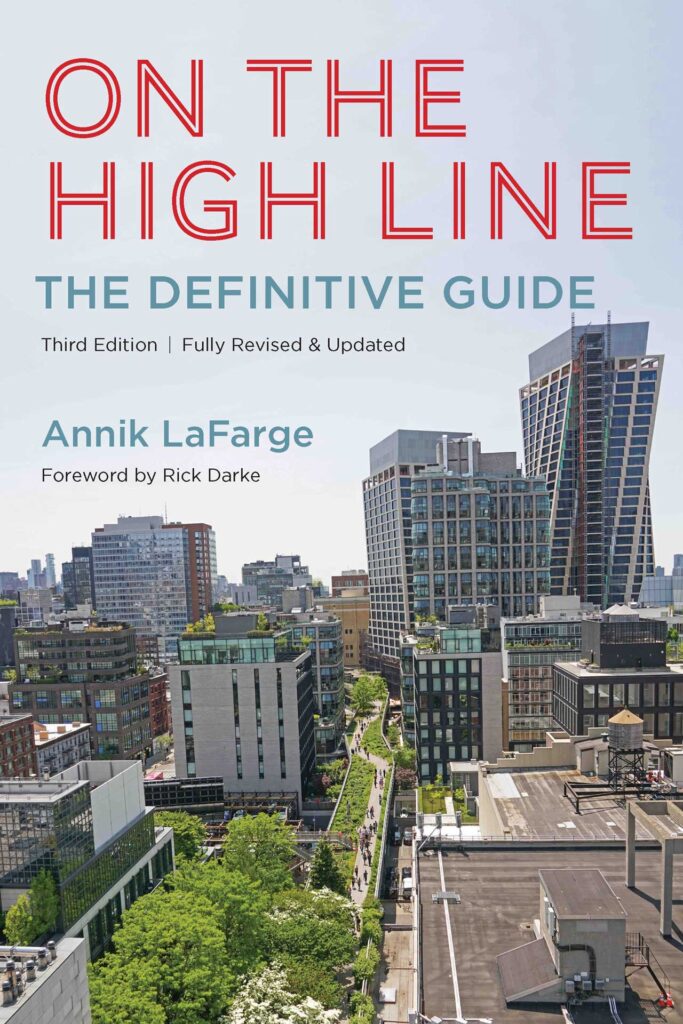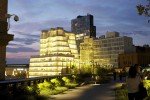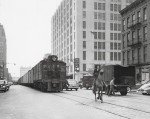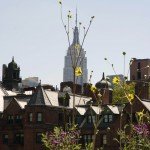This morning during Spring Cutback training, longtime High Line volunteer Pat Jonas explained the reason for the annual ritual in the “park in the sky.” It’s because “in this prairie we don’t have wildfires to naturally manage the landscape.” We also, Pat mentioned, lack large herbivores – buffalo, for example – who would munch the tops of the grasses and other native plants. And so instead we have an army of smaller mammals: the volunteers of the High Line, who gather every year for this ritual of cleansing and renewal. [Click a photo to enlarge it.]
During training this morning, a group of volunteers talked about the social bonds they’ve cultivated over the now eight years of Cutback. It’s my favorite time of year too, when people of all ages, backgrounds, and parts of New York City come together in usually cold, sometimes downright harrowing weather, and work side-by-side in the gardens with large, sharp tools. For a few hours we clip, trim, slice, clear, sweep. We also talk, share stories and information, answer questions from tourists, and learn about horticulture from the amazingly knowledgeable garden staff.
It’s a real community event with a purpose: to cut back the tens of thousands of plants and grasses on the High Line, so they can begin a new year of growth.
I always feel happy when it’s Cutback time, but this year more than ever. Friends of the High Line has posted signs at every entrance of the park to remind visitors that everyone is welcome here, no matter who you are, where you come from, or who you love. Next month, when the annual March Cutback ritual begins, you will see teams of volunteers in garden beds who would, if they weren’t crouched over a clump of prairie grass, be singing that message from the rooftops. For more about the Cutback, start here.
Here’s the Chelsea Grasslands at dawn one March morning, right after the Cutback. This vast project not only makes the park look tidy and young again, but it also reveals the rails, sleepers and ballast — the infrastructure of the old railroad. Visit soon, because these plants grow quickly, and pretty soon the greenery will once again take over, making this look more like a beautiful park than a former freight railroad.

